Different Types of Wool Fabric with Names and Pictures
Wool fiber is the natural hair growth of certain animals and is composed of protein. The quality of wool fiber is determined by the health of sheep, the breeding, climate, food, and general care. A hardier and heavier wool fiber is produced in cold weather. Excessive moisture dries out natural grease. Insufficient or poor foot food retards growth. Certain countries are suitable for large-scale sheep raising and produce the greatest quantities of wool such as Australia, New Zealand, Argentina, South Africa, and The United States. However, in this article, I will discuss the Different Types of Wool Fabric with Names and Pictures. At first, we will learn some special properties of wool fabric.
Wool is usually the word to describe the fabrics that are made out of spinning fleece from a sheep, however, there are other types of wool fabric from different animals, each with their own properties, this article describes these types of wool fabric.
Properties of Wool Fabric
Wool fabric has some special properties. Some important properties of wool fabric is given below.
- Wool fabric has insulating properties. Naturally, wool fibers have crimp. This crimp creates a small air pocket. This air pocket traps the heat and makes the wool fabric an excellent insulator.
- Wool fibers can absorb moisture without dampness. Wool fiber can absorb up to 30% moisture of its weight. This moisture management of wool fabric makes the wearer dry and comfortable.
- Naturally, wool fabric can be resistant to tearing and abrasion.
- Wool fabric is soft and comfortable to wear.
- Wool fabric has excellent draping quality.
- Fabric wool can be stretched from 25-30% percent of its natural length.
- Because of wool fabric has a high degree of resilience, wool fabric wrinkles less than other fiber.
10 Different Types of Wool Fabric with Names and Pictures
1. Sheep’s Wool Fabric:
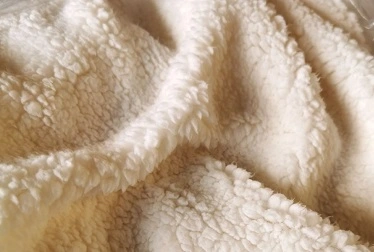
This is the most popular among all Different Types of Wool Fabric. Sheep’s wool fabric is collected from domestic sheep. The standard old of sheep is 7 months or more. This type of wool fabric is common and popular. Some use of sheep’s wool fabric is listed below:
- Sheep’s wool fabric is highly versatile, ranging from light wool gauzes to heaving-weight wool coatings.
- It is used to produce luxurious wool suits, blouses, trousers, and coats.
- This type of wool is flexible. It is used to create various styles and designs.
2. Cashmere Wool Fabric:
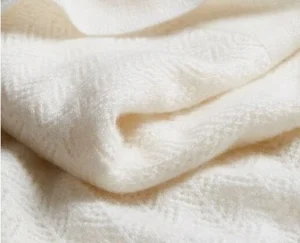
The cashmere goat is native to the Himalayan Mountain region of Kashmir in India, Mongolia, and China. The fleece of this type of goat has long, straight, coarse outer hair of little value. This fine cashmere wool fiber is not sheared from the goat but is obtained by frequent combings during the shedding season. Use:
- Cashmere wool fabric is used for garments such as sweaters, sports jackets, and overcoats.
- It is also used for making jackets, skirts, and trousers.
- Cashmere wool fabric is also used to make scarves and gloves.
3. Mohair Wool Fabric:
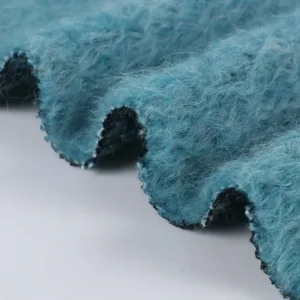
Mohair wool is the hair of the Angora goat, native to the province of Angora, Turkey. Angora goat is now raised in South Africa and The United States. Some domestic mohair, particularly the mohair obtained from Texas. Imported mohair is a long staple, 9 to 12 inches long, and represents a full year’s growth. Use:
- Mohair wool fabric can be used to made mothproof fabric.
- It is also used for suiting, coating, and Boucle’s fabrics.
- Mohair wool fabric is ideal for coats and jackets.
- It makes soft, fluffy sweaters and other knitted garments.
4. Alpaca Wool Fabric:
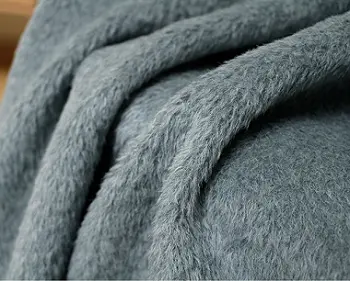
In the higher regions of the Andes, 14,000 feet above sea level, is found another fleece bearer, the Alpaca, a domesticated animal that resembles the Llama and is related to the camel. The fiber is valued for its silky beauty as well as for its strength. The hair of the alpaca is stronger than any other ordinary sheep’s wool. Alpaca wool is water-repellent and has a high insulative quality. The staple is relatively long, ranging from 6 to 11 inches. Use:
- Alpaca wool fabric is used for sweaters, coats, scarves, and blankets.
- It is also used to make beautiful suits, dresses, and other tailored garments.
5. Vicuna Wool Fabric:
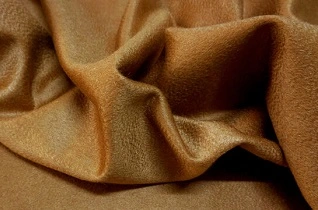
The rare animal whose fiber makes the world’s most costly and most exquisite cloth, surpassing all others in fineness and beauty, is found in an almost inaccessible area of the Andes Mountains, at altitudes between 16,000 and 19,000 feet. The vicuna, one of the wildest of animals, is less than 3 feet high and weighs 75 to 100 pounds. Use:
- It is the most expensive fiber used to make suits and overcoat fabric.
- Vicun’a wool fabric is used for making sweaters, and scarves.
6. Merino Wool Fabric
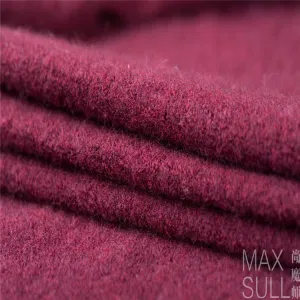
Merino wool is a type of lambswool obtained from Merino sheep that is finer, softer, and warmer than other types of wool. It is a versatile fiber that can be knitted as well as woven. Use:
- In knit form, merino wool fabric is used to make skirts, dresses, sweaters, and turtlenecks.
- In woven form, this type of wool fabric is used to make waistcoats, trousers, jackets, and coats.
7. Camel Hair Wool Fabric
Camel hair is a fine hair that is known to the American consumer chiefly in the form of high-quality coat fabrics. All parts of Asia are home to the two-humped Bactrian camel that produces this textile fiber. In desert countries, where camels are used as burden carriers and for transportation, it is extremely hot during the day and extremely cold at night. This constant change has produced a protective hair covering that insulates the body in both heat and colt. Use:
- Naturally, camel hair wool is water-repellent. This type of wool fabric is used as water-repellent fabric.
- It is also used to make luxurious tailored coats.
8. Wool tweed fabric
A woolen, rough-textured fabric, wool tweed is a generic term for woolen, rough-textured fabrics. Tweeds are famous for their distinctive colors and patterns, such as Harris tweed, Shetland tweed, and Donegal tweed. They are commonly available in a variety of colors and patterns, such as the classic herringbone or the subtle heathered variety. Due to their rough texture, they often require linings to be worn comfortably. Use:
- Wool tweed fabric is used to make sports blazers and jackets.
- It is also used to make waistcoats, overcoats, and skirts.
9. Angora wool fabric
The angora rabbit produces long, fine, silky white hair that is clipped or combed every 3 to 4 months. The finest angora comes from France, Italy, and Japan. The angora rabbit is also raised in many other parts of the world, including the United States. Use:
- Angora wool fabric is mainly used to make baby clothes.
- It is also used to make sweaters, mittens, and milliners.
10. Qiviut wool fabric:
One of the softest hair fibers, which makes very warm yet light fabrics, is the under hair of the musk ox, called qiviut. Great interest has been around in raising musk ox in Alaska and Northern Canada, both for its meat and for the fiber, which is shed in early summer. Use:
- Qiviut wool fabric is used to make a large sweater.
- It is also used to make waistcoats, shirts, and jackets.
Finally, these different types of wool fabric have been used in apparel warm clothes like sweaters, suits, coats, and socks because of their good durability and ability to wick moisture. Apart from apparel, Different Types of Wool Fabric are part of home furnishing, outdoor gear, crafts, and industrial applications.
References
- Chawla, K. (1998). Fibrous Materials. Cambridge: Cambridge Univ. Press.
- Cook, J. G. (2005). Handbook of Textile Fibers. Delhi: WoodHead Publishing Limited.
- Corbman, B. P. (1987). Textile Fiber to Fabric. Singapore: McGraw Hill Book Co.
- Dr. Hosne Ara Begum, P. D. (n.d.). Natural fibers. Dhaka: Hafiz book center.
- Gupta, V. K. (1997). Manufactured Fibre Technology. New York: Chapman & Hall.
- Hongu, T. P. (2005). M. New Millenum Fibres. Cambridge: Woodhead Publication Ltd.
- Kaplan, N. (2006). Textile Fibres. New Delhi: Abhishek Publications.
- Author: Kazi Md. Rashedul Islam
- B.Sc-in-Textile Engineering (DUET)
- Author & Founder: Textile Trainer
- Email: [email protected]
- You may love to read: Wool Manufacturing Process as Textile Fiber to Wool Fabric
